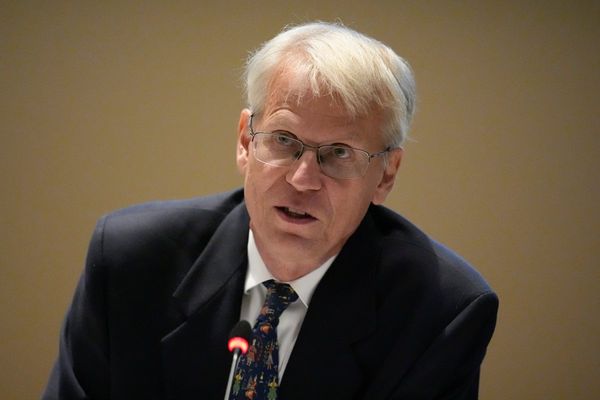AS Edinburgh bursts into its usual August transformation — with streets packed, flyers fluttering like confetti, and stages popping up in every spare inch of the capital — dozens of Scottish women are holding their ground.
For this year’s Edinburgh Festival Fringe, The National has spoken to three Scottish women in dance that are carving space, shifting narratives, and staying grounded in their artistic truth, despite the commercialism swirling around them.
The three shows — These Mechanisms by Christine Thynne, What Ever Happened to Harmony Banks? by Tess Letham, and Chunky Jewellery co-created by Jude Williams — offer audiences deeply personal, nuanced reflections on womanhood, art, and identity.
The seeds of Christine Thynne’s These Mechanisms were planted through a Luminate bursary, where Thynne was able to explore what happens when her love for sea kayaking collides with her contemporary dance practice.
“Back in 2021, I was lucky to receive a bursary from Luminate, Scotland’s Creative Ageing Organisation. It gave me the space to explore my love of the outdoors, especially sea kayaking and how that could connect to my passion for contemporary dance.”
She credits a creative retreat in Nethy Bridge with long-time collaborator Robbie Synge as “the building blocks for These Mechanisms.”

“Every audience is important to me. Within These Mechanisms there are risks, it’s live and unpredictable, and that is part of its charm.” Even within the high-stakes atmosphere of the Fringe, she stays true to her ethos: “For me, the creative process comes first—always. I trust that the work is honest and strong, so the artistic quality will shine through.”
Likewise, Letham’s What Ever Happened to Harmony Banks? grew from a deep-dive into voice, celebrity, and female performance.
“The show has grown from a longer line of enquiry in my work around voice, identity, and the female experience in performance,” she explains. “Drawing from personal experience as well as broader cultural narratives, I explored what it means to be a woman, artist, and public figure under the lens of celebrity.”
Letham reflects on the nature of the Fringe’s transient audiences: “Fringe audiences feel different because you’re reaching people you might not normally connect with especially in contemporary dance. It’s a real mix: international visitors, tourists, curious locals.”
This wider exposure has influenced how she shapes her work, she adds: “I’ve become more interested in making work that’s accessible to a wider, more commercial audience. It sits in that tension: drawing people in with recognisable forms, then gently pushing their boundaries a little perhaps.”
Jude Williams of Barrowland Ballet, co-creator of Chunky Jewellery, comes at storytelling from a different angle — deeply collaborative, forged in friendship and emotional reckoning. “Our lives co-authored Chunky Jewellery as our friendship was forged in an intense collision of arrivals and departures, over the course of a tumultuous year,” she shares.
The title emerged after co-creator Natasha Gilmore received a piece of chunky jewellery one mid-life birthday.

For all three women, being Scottish — or rooted in Scotland — profoundly shapes the lens of their work.
“There’s definitely a certain lens in my work, especially in the style and humour that I’d say is connected to my identity as a Scottish woman,” says Letham. “There’s something about the blend of sincerity and irony and humour, that feels rooted in where I’m from.”
Thynne adds: “I think there’s something quietly powerful about bringing a lifetime of lived experience—and a Scottish voice—to the stage. It adds depth, I hope.”
Williams says: “There are definitely musical moments and fragments of song that are rooted in the landscape of Scotland. Like those tunes, the stories go beyond any land and become – in their specificity – a universal search for peace within struggle, hope within failure, grief in a dance with joy.”
While the Fringe promises opportunity, it does still reflects larger inequities across the arts.
“In general, I think more support is needed for women in the arts, not just at the Fringe,” says Letham. “More work needs to be done to create real equity, not just in opportunities, but in how value is placed on different kinds of voices, stories, and creative labour.”
Williams puts it more bluntly: “The world is deeply steeped in the aching inequalities of intersectional oppression, and there are many barriers to freedom.”
She calls for more stories that embrace “solidarity, community, alternative models of family, chosen family, hope and courage".
Even with support from institutions like Dance Base and Creative Scotland, both Thynne and Letham are clear-eyed about limitations.
“Without them, These Mechanisms wouldn’t exist. I don’t take any of it for granted,” says Thynne.
Letham echoes that gratitude but notes that many artists are priced out: “Scotland could definitely do more to support Scottish-based artists at the Fringe, especially given how significant a platform it is.”
The camaraderie among women artists offers a buffer.
“There’s a wonderful sense of solidarity,” says Thynne. “I’ve connected with artists like Farah Saleh ... Natasha Gilmore ... and the brilliant PRIME at Ten and Double Take.”
“There’s a quiet solidarity in our team,” says Williams. “Sometimes it’s as simple as a hug just before going onstage, or a quiet smile.”
So what’s the message to other women thinking about stepping onto a Fringe stage?
“Do it. Why not? Be curious, be bold!” says Thynne.
“Yes, absolutely do it,” urges Letham, “but make sure you feel supported in your Fringe adventure.”
And Williams offers the most Fringe advice of all: “Have a f*cking great time and stay true to your heartfelt vision. Drink water, rest, pack snacks that nourish and dance.”







